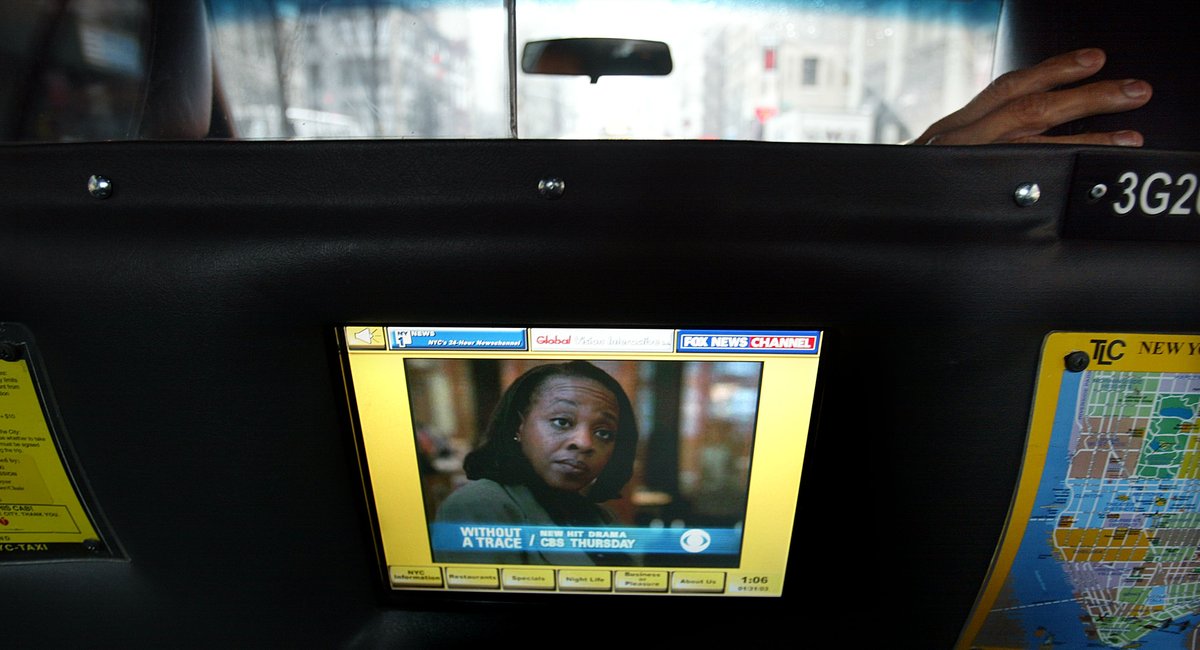This column originally appeared in On The Way, a weekly newsletter covering everything you need to know about NYC-area transportation.
Sign up to get the full version, which includes answers to reader questions, trivia, service changes and more, in your inbox every Thursday.
When a seasoned New Yorker jumps into a yellow taxi, their first move usually isn’t to buckle their seatbelt — it’s to mute the advertisements blaring from the digital screen fixed to the rear of the passenger seat.
Those screens have been in the city’s fleet of 13,500 yellow cabs for years. Uber and Lyft riders may have forgotten about the pesky fixtures, but not for long. They’ll soon be allowed to be installed inside the more than 83,000 app-based cars licensed to operate across the five boroughs, under new rules being finalized by the Taxi and Limousine Commission
The screens might be annoying for riders, but for-hire vehicle drivers see them as a way to pad their income. The City Council in December passed a law requiring the TLC to allow them in Ubers and Lyfts, and the measure requires 25% of the revenue brought in by any advertisement displayed on an in-car screen to go straight to the vehicle’s driver.
During a TLC hearing on Wednesday, for-hire vehicle driver Sonam Lama said he could use the extra money. He noted his income has taken a hit in recent months as Uber and Lyft started kicking drivers off their apps for short periods of time to comply with city-mandated limits on how long they can roll around the city without passengers.
Lama, who said he’s been driving for the app-based companies since 2016, said he wants the TLC to broaden its rules to allow two tablets — instead of just one — to be installed inside Ubers and Lyfts.
“The money [that would come in] from the one tablet … is so small that I cannot even take my girlfriend out for a good dinner,” Lama griped.
The TLC plans to launch a timeline for the rollout once it finalizes the regulations later this year. The commission’s latest proposal would require the city’s Office of Technology and Innovation to approve and develop all tablets, which would also set content standards for the ads.
The rules proposed by the TLC for the screens would not allow the tablets to prompt riders to tip their drivers, a feature that’s currently only available on the Uber and Lyft smartphone apps. This omission drew criticism from the bill’s supporters.
“Why would you make this the one place in America where people can’t get tips through tablets?” asked Andrew Greenplatt, policy director for the Independent Drivers Guild.
TLC Commissioner David Do promised his team would “go back to the drawing board” before finalizing the rules for the screens. Following the hearing, TLC spokesperson Jason Kerstens said the agency will work “to include a way to tip through the screen without having to add credit card readers” into for-hire vehicles.
Have a question for us? Curious Commuter questions are exclusive for On The Way newsletter subscribers. Sign up for free here and check Thursday’s newsletter for a link to submit your questions!
Question from Elena in Manhattan
With the MTA increasing fare enforcement on select bus routes, and the ability to OMNY tap with a physical credit card or Apple Pay on the bus (for first swipes and transfers) that does not produce a physical receipt, how can I prove to an officer that I paid the fare when they come on board?
Answer:
MTA inspectors use what’s officially called an “Onboard Validation Device” to check proof of payment. The devices scan credit cards or smartphones to see if they’ve been used to pay fares on the bus. The technology has been used by the agency’s fare checkers on Select Bus Service buses since 2021, when OMNY was rolled out to all the city’s buses. The fare enforcers can annoy passengers when they hold up an entire bus to check if everyone has paid.
“Riders must present the same contactless card or smart device they tapped at the OMNY reader and tap it on the device carried by the inspector to prove they paid the fare,” MTA spokesperson Kayla Shults said.
There have been reported instances of riders paying and the validators not working, but Shults called those “rare instances.” Still, if the validator doesn’t show you paid, the inspector will kick you off and could issue you a $100 fine.
